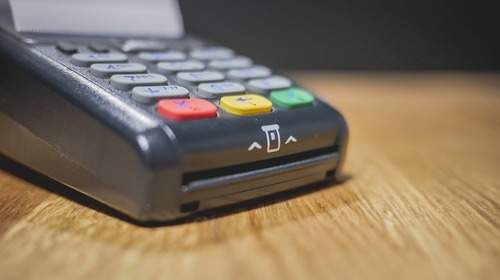Un secteur dominé par des acteurs historiques
Le secteur des terminaux de paiement est encore dominé par des acteurs historiques, qui se partagent 95 % d’un marché en pleine croissance. Mais pour combien de temps encore ?
L’arrivée de la pandémie a accéléré le recul de l’argent liquide, qui perdait déjà chaque année du terrain au profit de la carte bancaire et du paiement mobile. Actuellement, à peine plus d’un commerçant sur deux possède un lecteur de carte, mais ils sont de plus en plus nombreux à s’équiper d’un terminal de paiement.
De nouveaux acteurs, attirés par l’essor de ce marché, font leur apparition : il s’agit des fintechs, qui proposent des terminaux à des prix largement inférieurs à ceux pratiqués par les acteurs historiques, comme Ingenico ou Verifone.
De plus, contrairement aux lecteurs de cartes distribués par les banques, les terminaux proposés par les fintechs le sont sans abonnement et sans location, en échange d’une commission beaucoup plus élevée sur les transactions. Elle est en moyenne de 1,75 %, alors que celle des offres bancaires est de moins de 0,5 %.
SumUp et iZettle, leaders de la nouvelle génération
Deux acteurs européens marquent plus particulièrement ce nouveau paysage : l’anglo-saxon SumUp et le suédois iZettle.
PayPal a racheté iZettle en 2018 pour un montant de 2,2 milliards de dollars, et SumUp a racheté la scale-up Tiller, qui propose des lecteurs de cartes bancaires et des caisses enregistreuses numériques aux commerçants. Il s’agit de la quatrième acquisition réalisée par SumUp en trois ans.
Si les coûts des terminaux de paiement proposés par ces deux leaders européens diffèrent, la commission sur les transactions est la même, soit 1,75 %.
Certaines jeunes pousses tirent également leur épingle du jeu, par exemple Smile & Pay, qui propose aux commerçants des formules mêlant abonnement mensuel et commission moins élevée, de 0,75 %. Smile & Pay a récemment bouclé une levée de fonds de 5 millions d’euros.
Face à l’arrivée de cette nouvelle génération, les acteurs historiques comme Worldline, leader français du paiement, sont forcés de suivre eux aussi le mouvement de digitalisation, sous peine de se laisser rapidement distancer.
